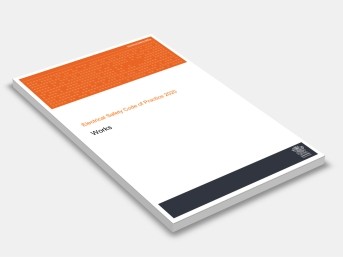Electrical Safety Code of Practice 2020: Electrical equipment rural industry
Electrical Safety Office
This Code should be used by persons conducting a business or undertaking which includes rural industry work, to ensure that their electrical safety duties are met.
This Code applies to plug-in and fixed electrical equipment used in rural industry work, for example:
• wiring systems, either inside or outside a building
• switchboards where fuses and circuit breakers and other electrical items are located
• overhead electric lines and associated equipment such as poles and cross arms
• portable power tools such as drills and grinders
• pumps and generators
• electrical equipment used where stated electrical risk factors apply, such as when electrical equipment is used in wet areas or where equipment is subject to harsh treatment
• areas where safety switches may be required.
The Code provides for the following ways of managing electrical safety duties:
• visual examination and assessment of the entire electrical installation, noting any defects and arranging for them to be rectified
• assessing for the presence of risk, including stated electrical risk factors
• managing the stated electrical risk factors associated with electrical equipment by:
i: assessing the risks and implementing risk control measures
ii: using safety switch protection or regular testing and inspection
iii: visually checking all electrical equipment prior to use or connection
iv: continuing to monitor work areas and electrical equipment on an ongoing basis.
This Code does not apply to:
• work that is not rural industry work.
• repair of consumer electrical equipment when unplugged from any electrical socket outlet.
Contents:
1: Introduction
2: The Risk Management Process
3: Specific Harzards And Risk Control
4: Risk Control-Initial And Annual Visual Examination
5: Risk Control-Stated Electrical Risk Factors
6: Risk Control-Electric Welding Work
7: Risk Control-Harzardous Areas
Appendix A: Dictionary
Appendix B: Flow Chart Summary Of What You Need To Do To Manage Electrical Risks
Appendix C: Sample Risk Assessment
